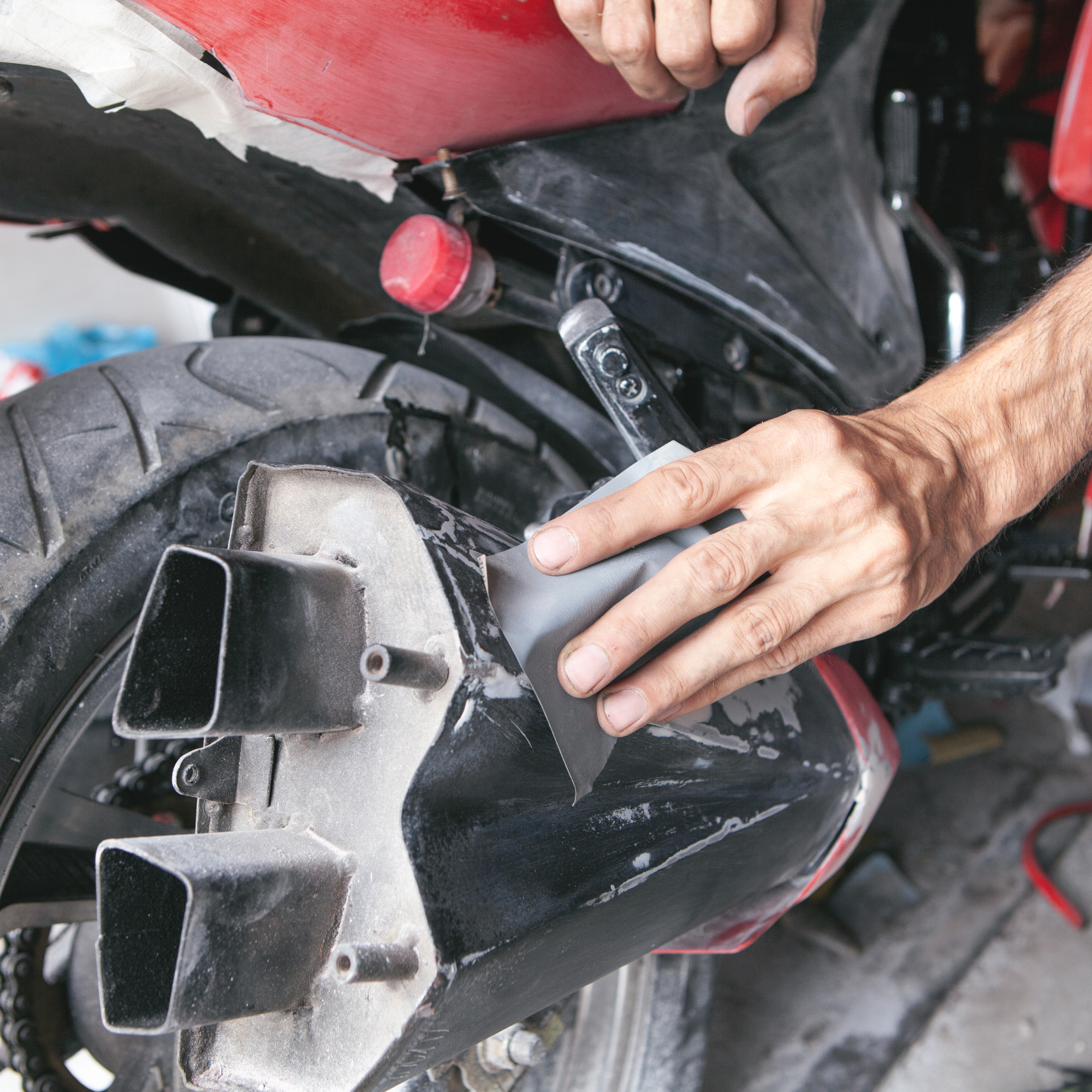Updated: 14.4.25
Tired of your motorcycle's dull, faded paint job? You're not alone. Over time, even the most vibrant finishes lose their shine, leaving your bike looking tired and worn.
Environmental elements like sun, rain, and road grime only speed up the process. It's frustrating, especially when you know your motorcycle deserves better.

But here’s the good news—restoring your bike’s appearance is entirely within reach. A fresh coat of paint not only revives your motorcycle’s look but also gives you the chance to express your style and even boost its resale value.
This guide will walk you through everything you need to know about motorcycle paint jobs, from the costs and types to DIY versus professional options. Let’s dive in and get your bike looking brand new again.
Why a Quality Paint Job Matters
A great paint job is more than skin deep. It’s an investment that boosts visual appeal and offers lasting protection against UV rays, moisture, and debris. If you're thinking about resale value, an attractive finish can be a game-changer.
Even older bikes can look refreshed with the right paint job. Plus, skilled painters ensure smooth finishes free from drips, bubbles, or uneven textures.
And yes, this applies to all types of motorcycles—even kids’ electric ride-on motorbikes.
Types of Motorcycle Paint Jobs
Basic One-Colour Paint Job
The most affordable and straightforward option. Ideal for those who want a clean, classic finish without breaking the bank. Despite its simplicity, it still offers a renewed look and protective benefits.
Custom Paint Job
Custom paint jobs let your creativity run wild. From racing stripes and flames to logos or full themed designs, custom work transforms your motorcycle into a rolling piece of art. These jobs are more expensive but highly personal and eye-catching. Great for making your ride unique or matching your gear.
Also true for bikes of all sizes, including top ride-on motorbikes for kids.
Related: How Much Does It Cost to Wrap a Motorcycle?

What Affects the Cost of a Paint Job?
- Type of Paint Job: Custom designs require more time and skill, thus cost more.
- Quality of Work: Better prep, paint, and finish equal higher cost—but also better longevity.
- Bike Size & Shape: Larger bikes and those with intricate bodywork require more paint and effort.
- Additional Services: Sanding, priming, and clear coating add to the cost but are essential for durability.
Average Cost Breakdown
Paint job costs typically range from £300 to £1,800 depending on quality, detail, and bike type.
DIY vs Professional: What's Best?
DIY
If you’re handy, a DIY paint job could cost just £100–£500. It’s a great learning project and can save money, but expect a steep learning curve and less-than-perfect results unless you’ve painted before.
Professional
Expect to pay more (£300–£3000) depending on whether it's a regular or custom paint job. You’ll get a durable, flawless finish—ideal if resale value or visual impact is a priority.
Cost Comparison Table
| Paint Job Type | Cost Range | Painter | Paint Quality | Customisation | Resale Value | Time Investment |
|---|---|---|---|---|---|---|
| Regular Paint Job | £300 – £1,500 | Professional | Average to High | Basic Colour Options | Moderate Boost | Fast |
| Custom Paint Job | £600 – £3,000 | Professional | Very High | Extensive Design Flexibility | Significant Boost | Longer |
| DIY Paint Job | £100 – £500 | You | Varies | Full Control | Depends on Execution | Time-Intensive |
Prepping for a Paint Job
Clean thoroughly to remove dirt and oil. Sand the surface to improve adhesion. Prime the body to set a strong foundation. Remember, better prep = better results.
Post-Paint Maintenance
- Clean regularly with a soft, non-abrasive cloth.
- Apply wax to protect and enhance shine.
- Store the bike in a garage or under cover when possible.
- For more upkeep tips, read How Long Does It Take to Charge a Motorcycle Battery?
Choosing a Painter
- Review their past projects.
- Ask about process and materials used.
- Get multiple quotes to compare cost and quality.
Environmental & Insurance Notes
Choose water-based paints when possible to reduce VOCs. Always dispose of old paint responsibly. Inform your insurer if your paint job significantly increases your bike’s value—this could affect your premiums.
Final Thoughts
A fresh coat of paint can bring new life to your motorcycle. Whether you're aiming to enhance value, protect the frame, or make a statement, painting is a powerful upgrade. Just remember: prep and maintenance are everything.
Also, don’t neglect regular safety checks like inspecting your motorcycle tyres.
Lastly, painting can even elevate the benefits of motorbike riding for kids—from confidence-building to fun, it all starts with a bike they’re proud to ride.
FAQs
Can I use car paint on a motorcycle?
Technically yes, but motorcycle paint is more flexible to handle vibrations. Car paint could crack or peel over time.
How often should I repaint my bike?
Every few years or when noticeable fading, chipping, or rust occurs. A high-quality job should last several seasons.
Can I paint over the existing paint?
Yes—if the base is in good condition. Just make sure to sand and prep the surface well first.





Share:
How Long Does It Take to Charge a Motorcycle Battery?
Is it Cheaper to Paint or Wrap a Motorcycle in 2025?